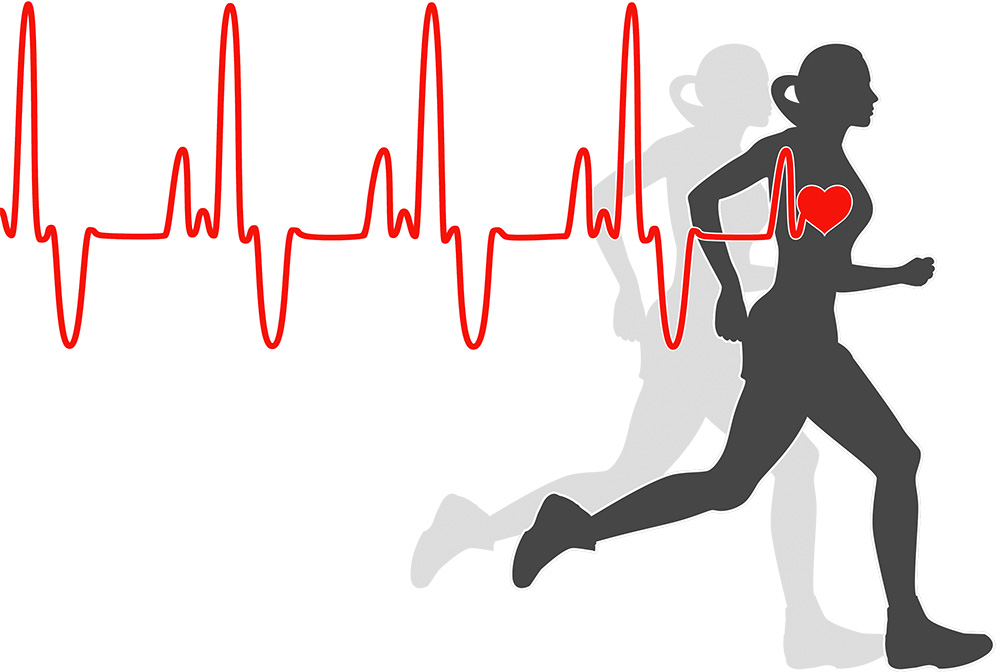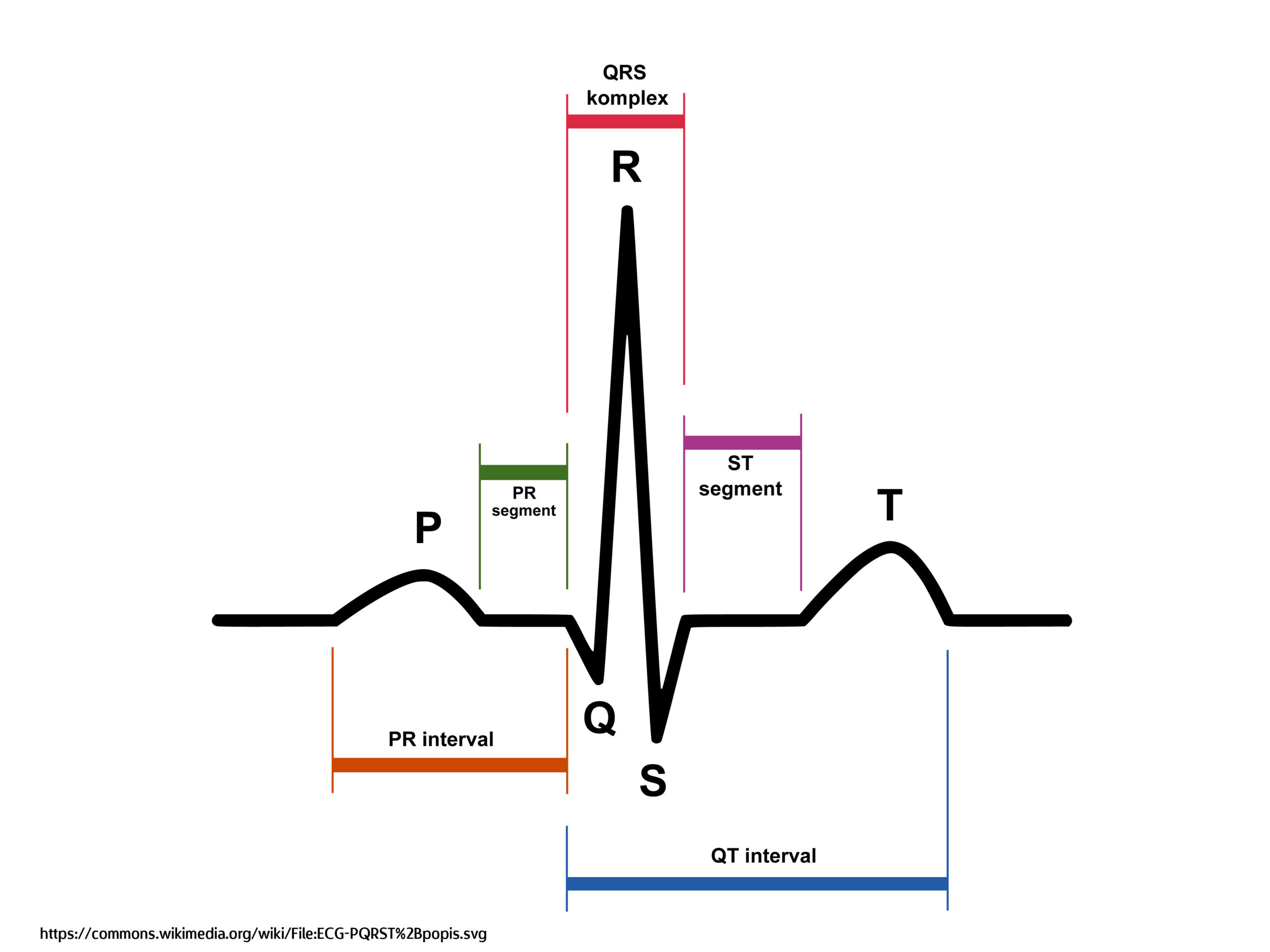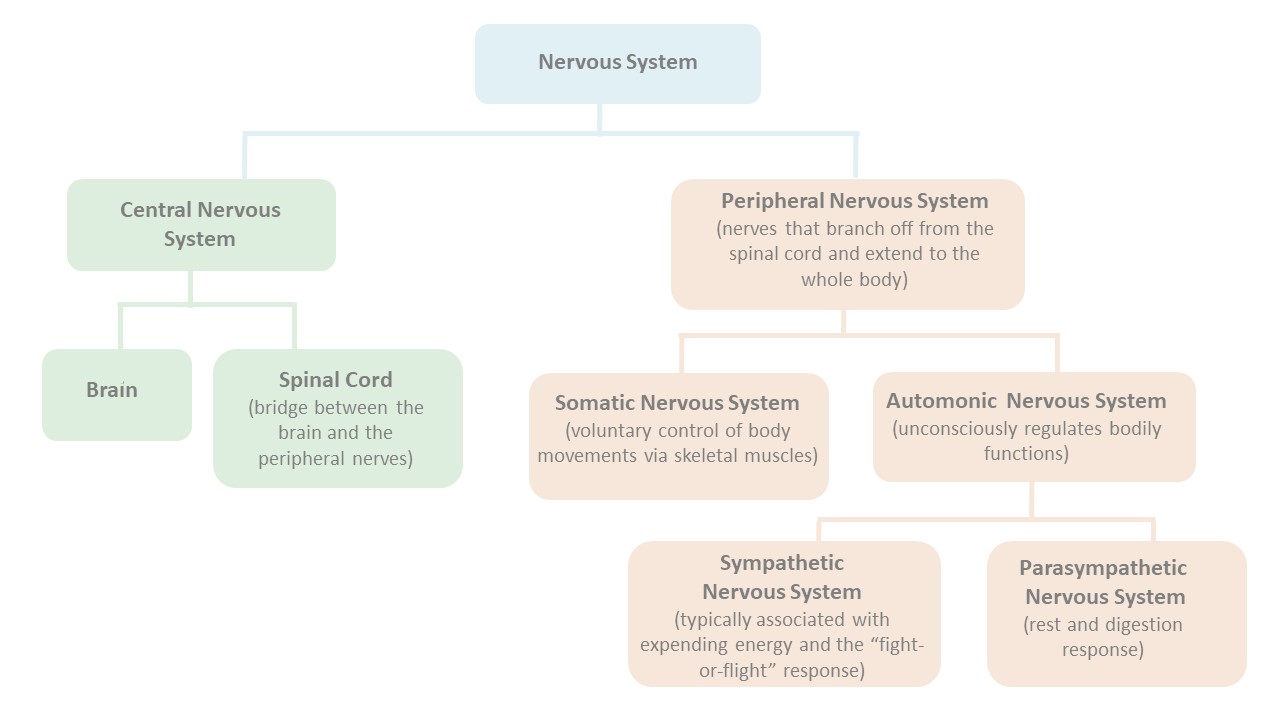Heart Rate Variability – Why measure it?
In view of observations of stress-associated variation in HRV and existing neurobiological evidence, HRV may be used as an objective assessment of stress and mental health
– Stress and Heart Rate Variability: A Meta-Analysis and Review of the Literature

The understanding of the relationship between Heart Rate Variability (HRV) and stress is increasing as the research in the area progresses. HRV is the amount of variation between heart beats, specifically the time between the R-R intervals. Two individuals who have the same number of heart beats per minute (BPM) can have drastically different variations in the time difference between R peaks.

Understanding the Autonomic Nervous System
In order to understand the role of HRV, it is important to have a general understanding of the Autonomic Nervous System (ANS). The ANS is the part of the Nervous System which is responsible for carrying out involuntary activities (or things we do not have to think about) as the name suggests. Such activities include breathing, digestion and as we are discussing here the heartbeat. The ANS is made up of 2 branches: The Sympathetic division and Parasympathetic division.

Sympathetic Nervous System (SNS)
The SNS is responsible for the ‘Fight or Flight’ response. SNS elevation occurs where there is a perceived need to be more alert and in response to increased perceived stress e.g. by increasing heart rate, breathing rate and inhibiting digestion.
Parasympathetic Nervous System (PNS)
The PNS is responsible for the ‘Rest and Digest’ response and often holds opposing characteristics to the SNS. PNS elevation occurs where individuals are relaxed and focusing on restoration e.g. by lowering heart rate, breathing rate, and stimulating digestion. HRV provides an indication of the contribution of both branches. Contrary to what may initially be expected, a higher HRV is generally a sign of good nervous system balance (however it should be noted this is not always the case!) An individual with a balanced nervous system can switch to either a more dominant PNS or SNS state when necessary. The PNS is telling the heart to beat slower, whilst the SNS is telling the heart to beat faster. From a practical perspective it can be useful to consider why this would be beneficial.
Example 1
If an individual is seeking to sleep it would be favorable to be in a predominately parasympathetic state where relaxation and restoration can occur. If SNS stimulation is high, getting to sleep is going to be problematic as arousal is high.
Example 2
When taking part in exercise it is beneficial to have an increase in SNS stimulation. For example, when running around a football field SNS stimulation is required to increase heart rate in order to direct blood to the working muscles to be able to carry out the activity. Furthermore, optimal arousal can be beneficial to increase performance. If PNS was high, competition for blood flow would present between digestion and the working muscles. Furthermore, individuals could present as too relaxed and arousal levels would be lowered.
Monitoring HRV
As technology progresses, wearable devices (e.g. chest straps, watches) and apps that can track HRV have been released. Although the accuracy of these methods is questionable, many have been shown to be reliable at rest with more research necessary during exercise.
HRV Standards
HRV is an individualized metric. It is important that each individual monitoring HRV understands what their normal HRV is, rather than using generalizations. A deviation from one’s own norm can provide a useful insight into ANS balance. Therefore, rather than comparing between athletes, a more suitable comparison would be relative to the same athlete.
Why would HRV decrease?
A trend for lower HRV is indicative of one branch inhibiting the other. Often PNS inhibition by the SNS can occur as a stress response. If HRV decreases long term (over several days) it is a signal that the body is working hard and in need of restoration. A lower trend for athletes may signify functional/non-functional overreaching initially before potential overtraining. Other potential reasons for the trend may include poorer sleep patterns, a new training stimulus, an increase in daily stressors e.g. around college exam periods, poorer nutrition, or the onset of illness. Furthermore, an effect of the ageing process is a natural decrease in HRV.
Can HRV be increased?
It is generally understood that the more cardiovascular efficient an individual is, the higher their HRV is. As a result, it’s not a surprise that elite endurance athletes usually have the highest HRV. There are many ways to increase HRV, most of which essentially oppose those that decrease it i.e. monitoring training load, improving nutrition, placing an emphasis on sleep, and reducing daily life stressors where possible.
Putting it all together
Whilst monitoring HRV is not going to help athletes reduce stress on its own, it does provide objective data as to the well-being of athlete which in turn can help athletes recognize the impact of lifestyle behaviors, and potentially create a positive change. HRV does have the potential to improve training quality as the objective data can allow practitioners to identify athlete’s recovery status and therefore prescribe suitable training loads. As stress includes biological, physical, and psychological factors, HRV should be integrated within the overall athlete monitoring alongside athlete self-reporting when evaluating stress. The underlying cause of the stress response should be considered. In practical terms, for some, exercise may be the root cause of the stress, for others it may be the reliever.
What is Metrifit?
Metrifit provides a simple and effective method for athletes to record their well-being and training responses as part of its athlete monitoring package. Athletes can communicate with you everyday via psychometric data such as sleep quality, sleep duration, stress levels, muscle soreness. Session-RPE can be used for monitoring training loads and GPS information can also be integrated. To find out more about the Metrifit Ready to Perform product and gain insight on the physical and mental state of your athletes through our daily wellbeing questionnaire contact us at .
About the author
Michael is a Sport Science student intrigued by understanding the variables and key determinants that impact an individual’s (athlete or general population) readiness to perform from both a psychological and a physiological standpoint. His primary areas of research revolve around physical development and the role of nutrition, sleep and stress in physical development. Michael works in multiple strength and conditioning environments from Rugby to Soccer to GAA, and also runs an online coaching service at Synthesize Coaching.

References
Interpreting HRV Trends in Athletes: High Isn’t Always Good and Low Isn’t Always Bad by Andrew Flatt
Can Wearable Devices Accurately Measure Heart Rate Variability? A Systematic Review
Heart Rate Variability Explained: Part 1
Seasonal changes in physical performance and heart rate variability in high level futsal players
The role of heart rate variability in sports physiology
Endurance training guided individually by daily heart rate variability measurements
Stress and Heart Rate Variability: A Meta-Analysis and Review of the Literature
































 Previous Post
Previous Post Next Post
Next Post





